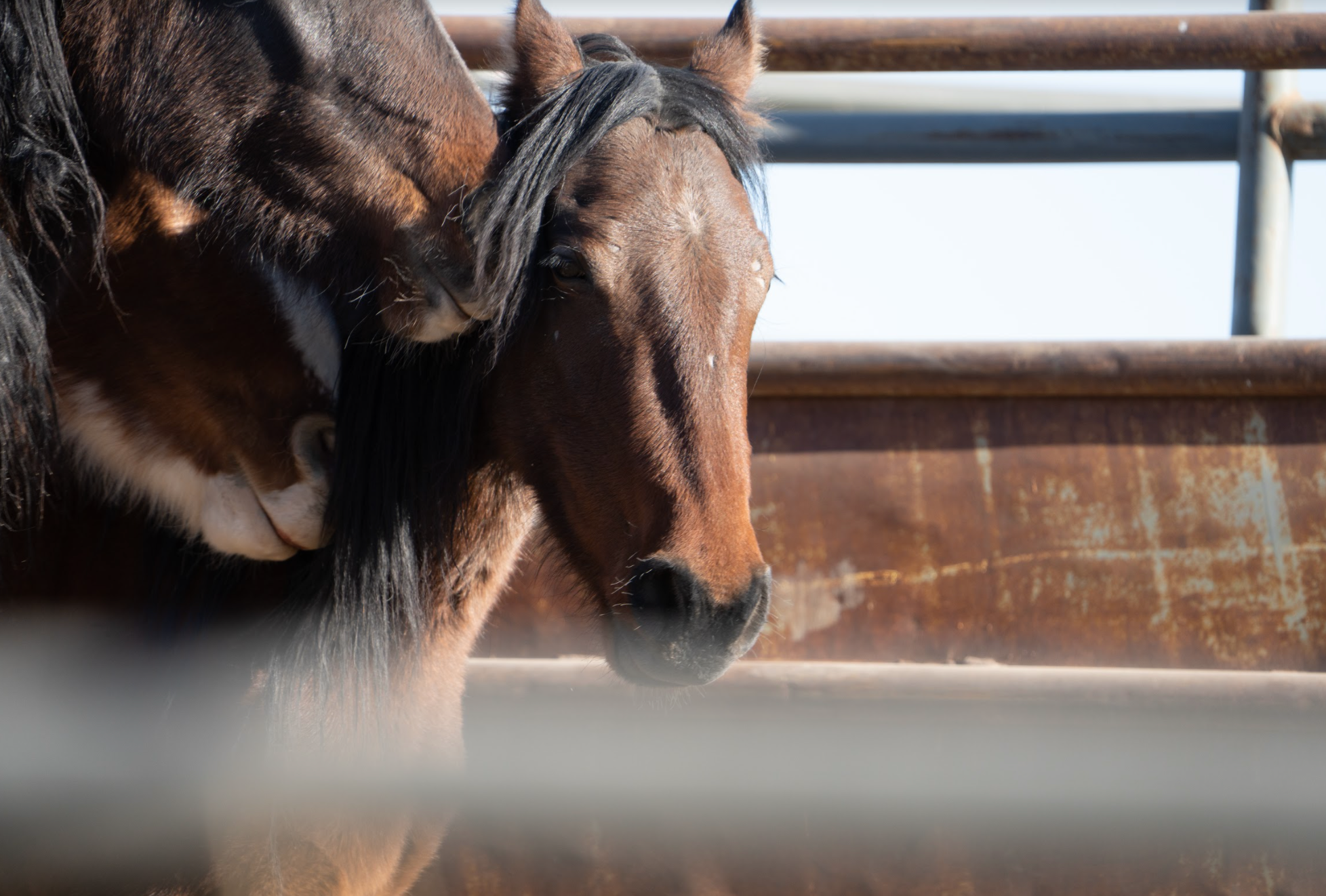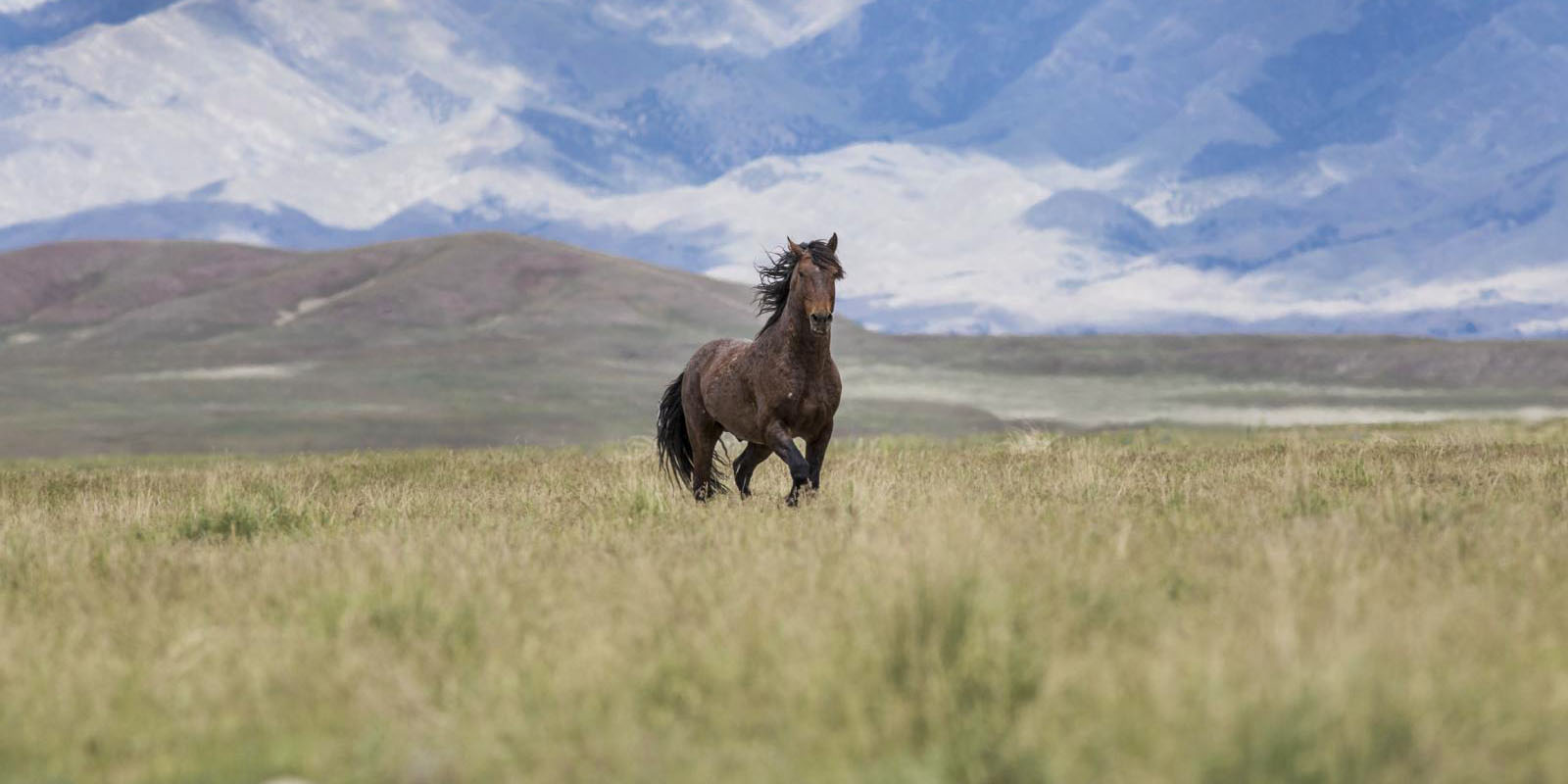WASHINGTON, DC (December 11, 2020) —The American Wild Horse Campaign (AWHC) and Utah citizen Robert Hammer filed suit Thursday in U.S. District Court for the District of Columbia against the U.S. Department of the Interior to stop the Bureau of Land Management (BLM) from performing risky and inhumane surgical sterilization surgeries on federally-protected wild mares (female horses) recently rounded up in Utah. The lawsuit was filed on behalf of AWHC by Eubanks and Associates, one of the nation’s top public interest environmental law firms.
At issue is the BLM’s decision to proceed with the invasive procedure despite significant public and congressional outcry, veterinary opposition, and a National Academies of Sciences recommendation against using the surgery for the management of wild horses.
“We’ve successfully sued previously to stop the BLM from galloping ahead with its irresponsible plan to conduct risky, painful, and invasive surgeries on wild horses and we intend to win again,” said Brieanah Schwartz, policy counsel for the AWHC. “The BLM’s decision to subject wild mares to this inhumane procedure violates four federal laws and is particularly egregious in light of humane, scientifically-recommended and cost-effective management alternatives such as the PZP birth control vaccine.”
Over the last four years, AWHC and its coalition partners filed successful litigation to block three previous attempts by the BLM to perform the controversial procedure on wild horses in Oregon. The agency has now turned its sights on Utah and a group of wild mares who were captured in a roundup that ended Wednesday in the Confusion Herd Management Area (HMA).
The procedure in question - “ovariectomy via colpotomy” - is widely regarded to be an outdated and inhumane surgical procedure. It involves a veterinarian inserting their arm into a mares’ abdominal cavity through an incision in the vaginal wall, manually locating the ovaries, then twisting, severing, and removing them using a rod-and-chain tool called an ecraseur.
“I find it perplexing that the BLM continues to push their population management philosophy in such a barbaric direction, particularly when effective, cost-efficient and, above all, humane alternatives are available,” said Robert Hammer, author and photographer, native Utahan, and plaintiff in the suit said in a statement. “The agency seems to give little or no consideration to the welfare of the mares they would subject to this cruel experimental procedure, nor the bands that rely upon intact adults of both genders for their ongoing health and survival.”
Video of the ovariectomy procedure can be viewed here. It was taken by Simone Netherlands, president of the Salt River Wild Horse Management Group, who attended a demonstration workshop that resulted in the deaths of a horse and a burro and severe infections in three additional burros. Netherlands concludes that ovariectomies are “100% not a viable or humane option for wild horse management.” She wrote an affidavit describing her observations.
When used infrequently for domestic mares, it requires adequate anesthesia and rigorous post-operative care -- including pain relief, antibiotics, and stall confinement -- that cannot be provided to wild, untamed horses. The main reason the procedure is performed in domestic horses is to alter their behaviors, something that is harmful to wild horses whose natural free-roaming behaviors allow them to survive in the wild.
###
The American Wild Horse Campaign (AWHC) is the nation’s leading wild horse protection organization, with more than 700,000 supporters and followers nationwide. AWHC is dedicated to preserving the American wild horse in viable, free-roaming herds for generations to come, as part of our national heritage.
Robert Hammer is a native Utahan, photographer, and author of the book, Salt Desert Mustangs: Discovering wild horses and historic trails in Tooele County, Utah. He runs Wild Horse Tourist, an informational website on viewing America’s wild horses and burros.


